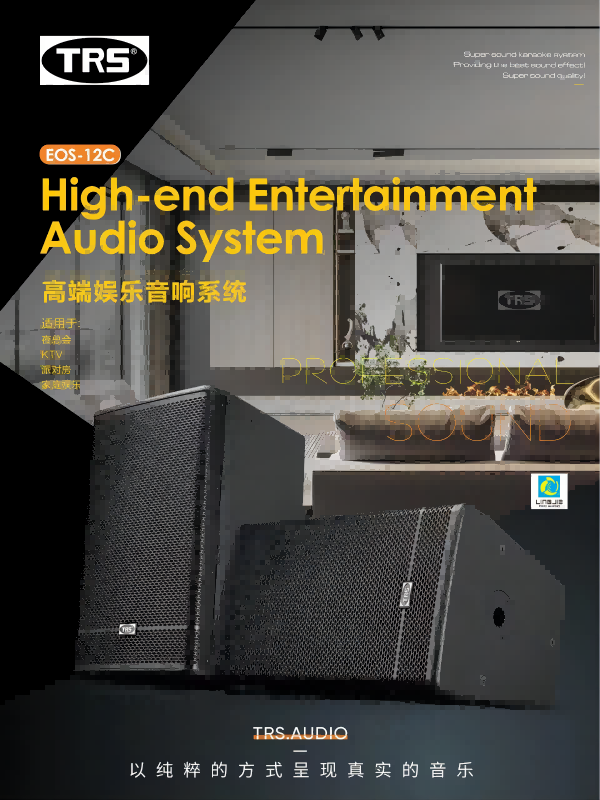Music is the food for the human soul, and sound is the medium for transmitting music. If you are a music enthusiast with high requirements for sound quality, then you will not be satisfied with ordinary audio equipment, but will pursue a professional level audio system to obtain the most realistic, shocking, and delicate auditory experience.
Professional audio, as the name suggests, is a sound system used by professionals, usually used in performances, recording, broadcasting, and other occasions. It has characteristics such as high fidelity, high dynamics, and high resolution, and can restore the original appearance of the sound, allowing the audience to feel the details and levels of the sound. The composition of a professional audio system generally includes the following parts:
Sound source: refers to a device that provides sound signals, such as a CD player, MP3 player, computer, etc.
Preceding stage: refers to devices that preconditioning sound signals, such as mixers, equalizers, reverberators, etc.
Post stage: refers to equipment that amplifies sound signals, such as amplifiers, amplifiers, etc.
Speaker: refers to a device that converts sound signals into sound waves, such as speakers, headphones, etc.
To create a perfect professional audio system, it is not only necessary to choose the appropriate equipment, but also to pay attention to the coordination and debugging between the equipment to achieve the best results.
Here are some commonly used precautions:
Choose high-quality formats and files for the audio source, such as lossless format, high sampling rate, high bit rate, etc., and avoid using low-quality compressed files, such as MP3, WMA, etc.
The front stage should be adjusted reasonably based on the characteristics and needs of the sound signal, such as increasing or decreasing the gain of certain frequency bands, adding or removing certain effects, etc., in order to achieve the goal of balancing and beautifying the sound.
The rear stage should select appropriate power and impedance based on the performance and specifications of the speaker to ensure that the speaker can operate normally and will not be overloaded or under load.
Speakers should be selected according to the listening environment and personal preferences, such as stereo or surround sound, single or multi-point, large or small, etc., and attention should be paid to the position and angle between the speakers and the audience to ensure the uniformity and stability of the sound field.
Of course, a professional audio system is not a cheap toy, it requires more time and money to purchase and maintain. However, if you truly love music and want to enjoy a perfect auditory feast, professional sound systems will bring you unparalleled satisfaction and joy. You deserve to have a professional audio system!
Post time: Aug-15-2023

